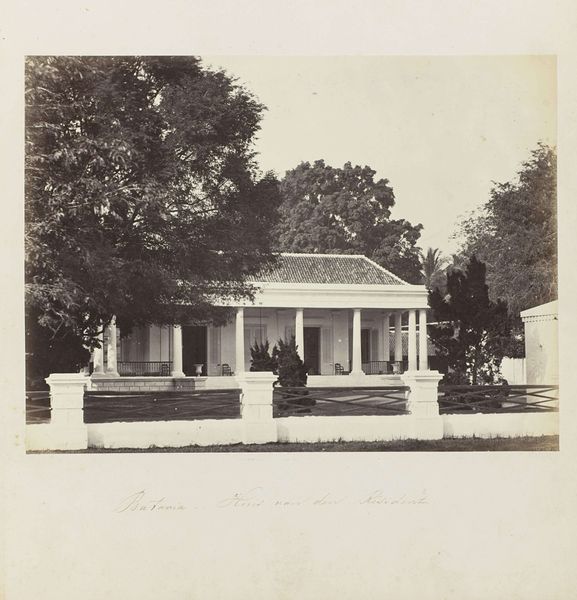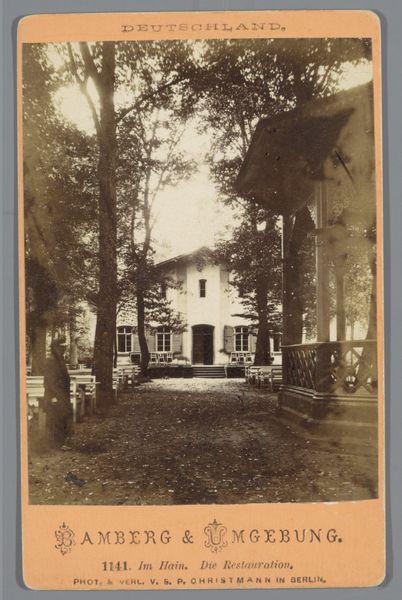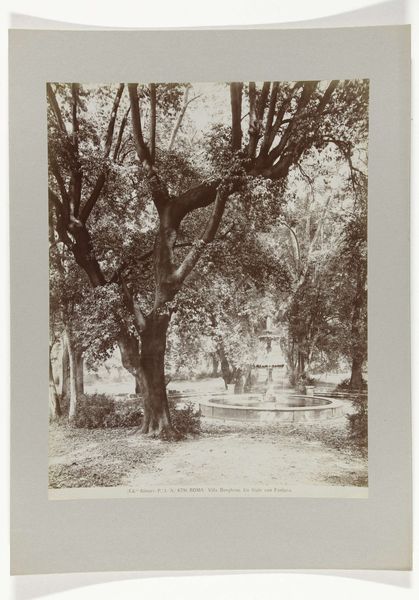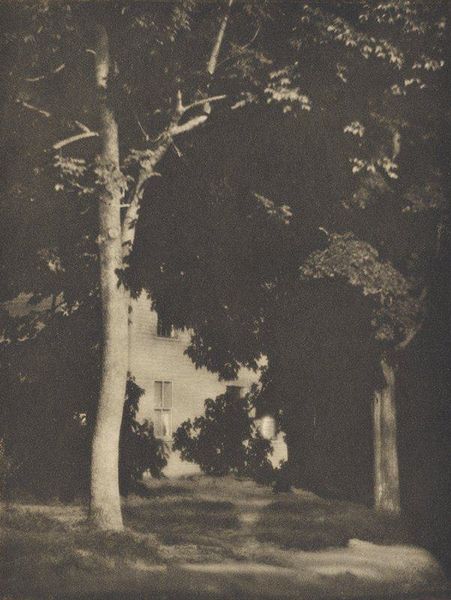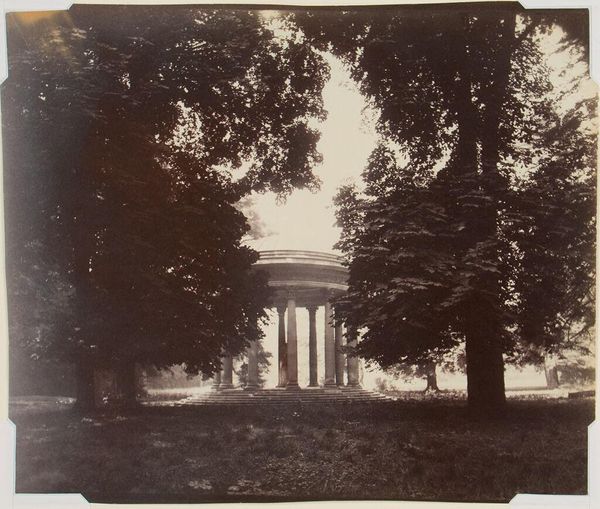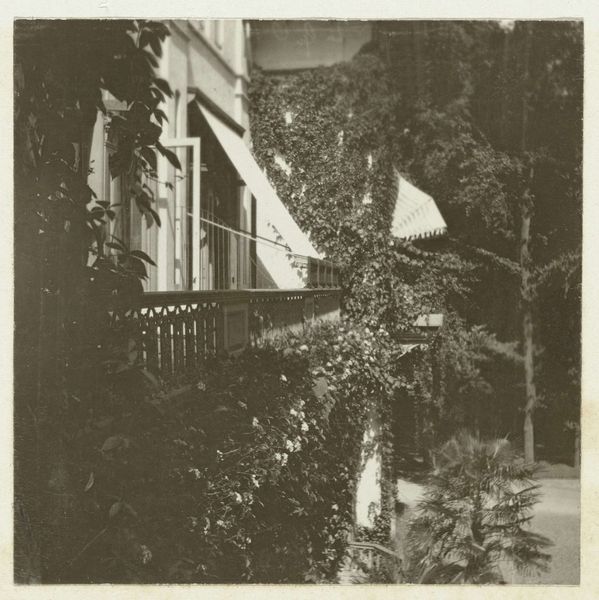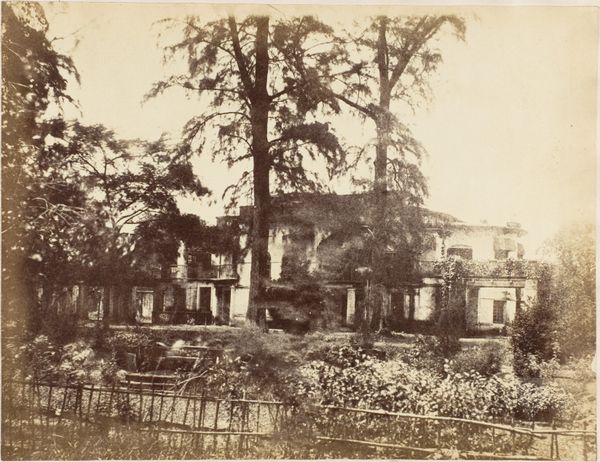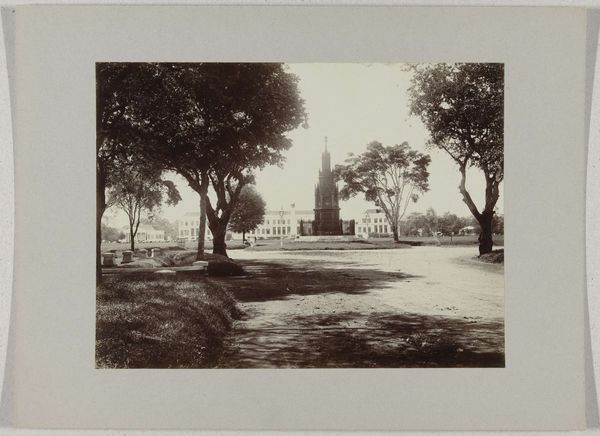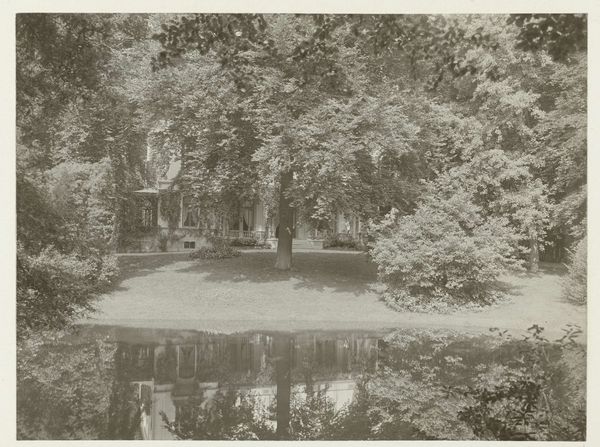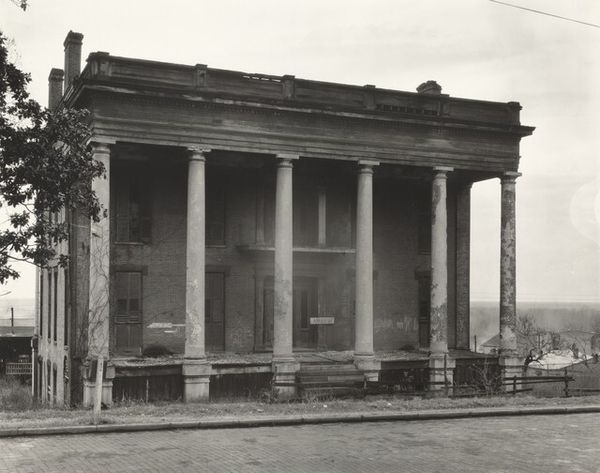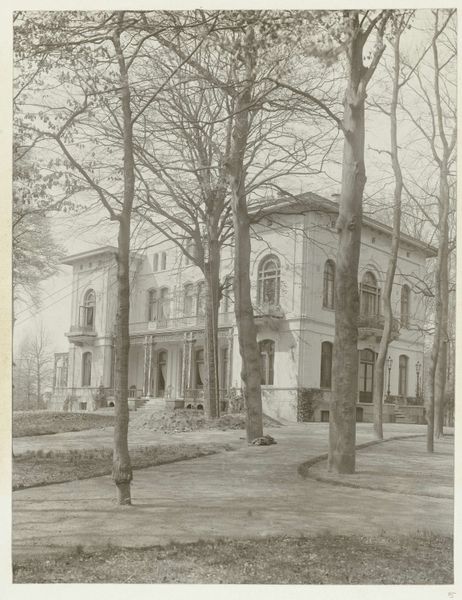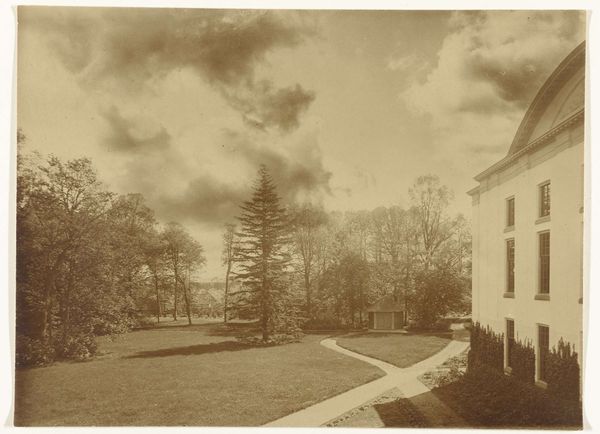
Dimensions: image: 34 × 26.2 cm (13 3/8 × 10 5/16 in.) sheet: 42.5 × 35.3 cm (16 3/4 × 13 7/8 in.)
Copyright: National Gallery of Art: CC0 1.0
Curator: Let's discuss this black and white photograph, "Vic Arlington/10", possibly from 1994 or 1995, by Madoka Takagi. Editor: It’s instantly striking. The contrast between the ethereal, almost dreamlike quality of the building and the stark shadows really grabs your attention. There's a strong sense of depth, and the composition draws your eye directly to that central structure. Curator: I’m interested in Takagi's choice of photography and her work displayed using gelatin silver print. She’s intentionally invoking the pictorialist tradition, and this print as an artifact itself speaks volumes about her process and engagement with the social context. Editor: Indeed. The sepia tones contribute to this feeling of looking at the past through a carefully constructed lens. There's a stillness here; the absence of people and cars creates an atmosphere that feels both intimate and somewhat isolated. It’s intriguing to observe how Takagi creates a seemingly familiar, classical scene only to unsettle it with her stylistic choices. Curator: Think about how the neighborhood might have evolved, especially concerning urban expansion and redevelopment during the early to mid 90's, right when gentrification was becoming such a hot topic. This photograph is not simply of a beautiful estate, but it acts as evidence, almost an archeological dig, reminding viewers to think of the human implications and costs. Editor: I understand that you appreciate its historical significance and the social commentaries of a potentially bygone era, but do you see how this relates to framing? Those imposing palm trees in the foreground seem almost to want to trap the house within their geometric embrace, turning nature and structure against one another. Curator: Right! These opposing forms are an interesting example of how photography can expose human's effects on nature; that this estate has seemingly withstood the passage of time and social pressures is amazing. Editor: That certainly changes the work and reveals Takagi's clever engagement with not just her medium but also her subject. I initially only considered the composition, but considering labor, and materiality I, too, now have an even deeper understanding. Thank you. Curator: My pleasure! I hope our discussion has helped illuminate the different facets and depth of this unique work.
Comments
No comments
Be the first to comment and join the conversation on the ultimate creative platform.
